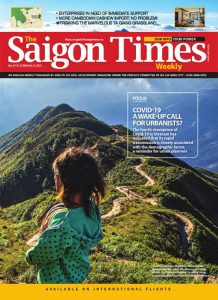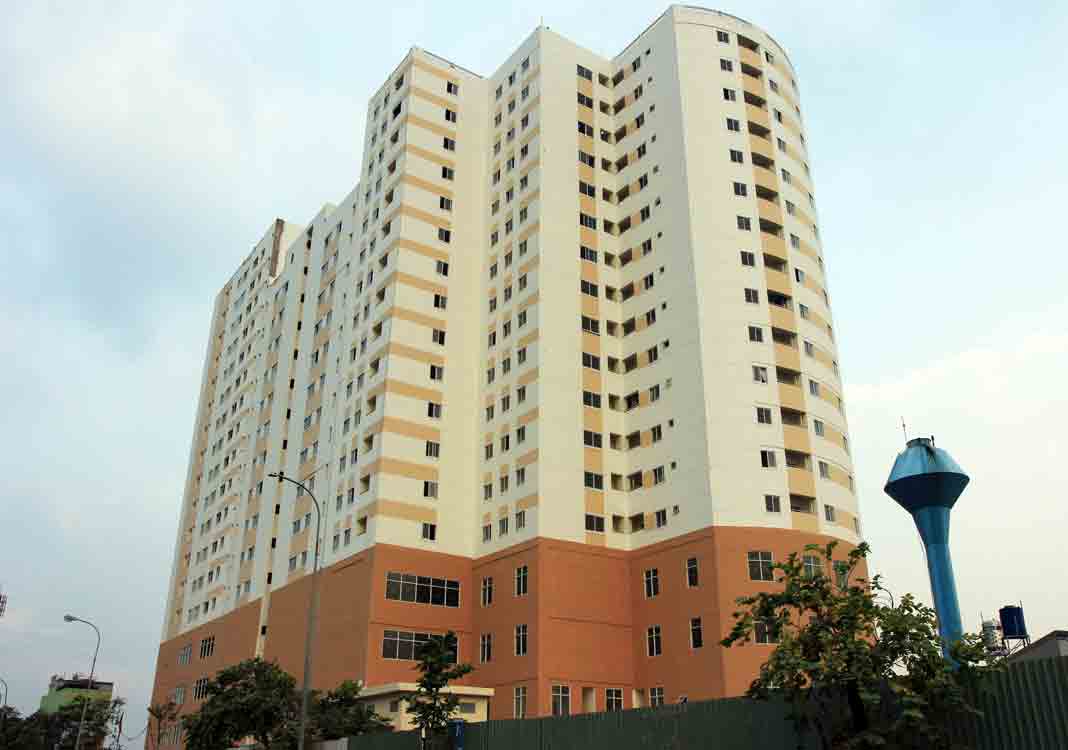The fourth resurgence of Covid-19 in Vietnam has indicated that the rapid transmission of the pandemic relates to the demographic factor, which should be a reminder for urban planners.
For 21 days, the HCMC authorities have relocated 2,000 inhabitants living in slums in Binh Thanh District during the latest resurgence of Covid-19. Hanoi followed suit resettling more than 1,200 residents in Thanh Xuan Trung Ward in Thanh Xuan District for 14 days. Later, the resettlement of people living in shabby houses was continued in District 4, District 5, Binh Tan District and Tan Phu District. Cities and nations in the region have also done the same—for instance, Bangkok, Jakarta, Manila and Singapore—which means that the pandemic is closely associated with the demographic factor.
What has actually happened during the two years of the Covid-19 pandemic clearly shows that the hardest-hit quarters where infections are rampant and hard to be suppressed are mostly densely populated cities. Asian cities which are Covid-19 hot spots are home to at least 10 million inhabitants.
These cities have many things in common which facilitate the pandemic transmission. As they are hubs of transport, services and industry—they are in fact national biggest or second biggest centers—a huge number of people come to live there. A case in point is HCMC. As the city is an enormous hub of air, land, railway and waterway transport, the number of visitors arriving in this city is enormous. It is also Vietnam’s largest hub of air transport, both domestic and international. Therefore, severe and recurrent infections are inevitable. Moreover, as the nation’s biggest financial, economic and service center, HCMC is the residence of millions of people from other parts of Vietnam as well as foreign places.
Too high population density makes effective social distancing impossible
While large population is a precondition for pandemic risks, it is the population density which creates infection clusters capable of becoming severe outbreaks. In the fourth wave of Covid-19, the HCMC authorities divide the city into different quarters indicated by different colors—red, orange, yellow and green—which represent the levels of infections. It is almost certain that the very high risk quarters are where the population density per square kilometer is prohibitively high. They are Tan Phu District (31,000 people per square kilometer), District 4 (48,500), District 5 (38,000), Tan Binh District (23,000), Binh Thanh District (25,000), District 10 (65,000) and District 11 (64,000). These figures are the average on the whole district, and if the absolute number on a specific area was taken into account, it would be unbelievable at 100,000 person per square kilometer.
The high population density has rendered the strict implementation of Directive 16 of the Government extremely difficult. Among the regulations set by Directive 16 is stringent compliance with the 5K rule, such as “staying put in a place” and keeping a distance of at least two meters between two persons. As many quarters in HCMC are crowded with people—where each family has five or six members living in a small house, and thousands of people share a long alley—the population density is exorbitantly high. The 5K rule is really a formidable challenge. Two long rows of houses are separated by a small walkway which is sometimes less than one meter, which does not meet the two-meter distance requirement. Social distancing is therefore infeasible.
Under such a circumstance, a house is distanced from a house and an alley is distanced from an alley seem impossible. That’s why moving people from those crowded places is the least worst option.

Covid-19 shows that the megacity model is no longer appropriate
The gritty reality created by Covid-19 should have prompted urbanists and architects to take into account again designs of small- and medium-scale cities for the future. Megacities housing tens of millions of inhabitants may no longer be appropriate. A megacity of the future, if any, should be a set of different small cities whose population of each of them should be smaller than two million dwellers, as calculated by European architects. Then, each city will be an independent entity and between them are natural distances which are vast forests, wide rivers or immense green spaces acting as a green belt thereby a city can be isolated if necessary.
This is a concept which should be embraced by the Vietnamese authorities and strategic planners to rearrange the country’s metropolises so as to cut down population density to a controllable level.
Before 2000, Hanoi had come up with a plan to rearrange its ancient quarter, eliminate some houses, increase green spaces and relocate residents to other places to reduce the population. Partnership with Japanese experts was then formed. However, it has come to nowhere. In 1990, HCMC began to build plans to cut the population of central districts to between 1.7 million and 2.2 million each, plus a host of measures, such as removal of existing universities, factories and public offices with a lot of people to the outskirts. At the same time, two satellite cities in Cu Chi and Hiep Phuoc were projected to resettle people in the inner city. Also, new residential areas in the south and northeast of the city were planned to attract people from the downtown. However, 30 years on, the inner city’s population has not reduced but has increased by 3.6 million people.
The efforts to redistribute the population have failed because they were not attached to the rearrangement of spaces, which means they failed to renovate housing blocks and create new living spaces.
Before 1990, cities in China shared a common structure which was mostly one-story houses, with metal roofing sheets and one house leaning against another, or endless rows of shophouses on narrow and winding streets. These quarters had a large population and a high density. However, when China embarked on her economic renovation, all her cities were restructured by wiping out old ways of accommodations and relocating residents to apartment buildings and modern high rises surrounded by vast green parks. Traffic was also redesigned to be much smoother.

Singapore has learnt a bitter lesson with Covid-19, too. First breaking out in Singapore in April 2020, Covid-19 later seemed to be under control. The Singapore Government was about to declare the lift of the social distancing order. However, the pandemic unexpectedly re-emerged in condominiums for visiting workers. The Singapore authorities had forgot these places where nearly 600,000 migrant workers were living in small spaces, with each apartment being home to between eight and 12 workers. It turned out that 60% of the workers had contracted the coronavirus. Recently, the Singapore Government has come up with plans to tear down all these condominiums to construct new ones with each apartment for three or four people.
It seems that Hanoi and HCMC should scrutinize the re-arrangement of their living spaces in ways similar to those of China. That means the gradual elimination of low-rise housing and high construction/population density which takes up a large acreage of land to be supplanted by the new accommodation mode embracing modern apartment high rises, vast green spaces and great distances between big constructions. This is a model which may help avert many risks, for instance fire, explosion and epidemics.
Such an urban restructuring is essential. However, whether it is successful or not depends largely on a variety of factors, such as capital, urban management level, and, particularly, the resolve of the leadership.
In HCMC, a group of architects once worked out a project to renovate quarters of slums to change them into modern high-rises. The area of Nancy in District 1 ought to be picked as a model before expansion. However, the initiative was then regarded as “unrealistic” and shelved.
Hopefully, the painful lessons given by Covid-19 resulting in thousands of deaths will be a wake-up call for policymakers and urban planners urging them to think about a new facelift to HCMC and preparations for future cities.









